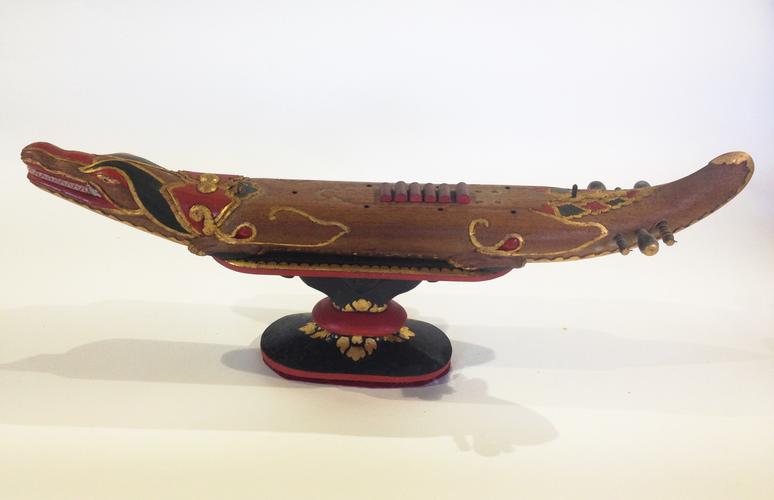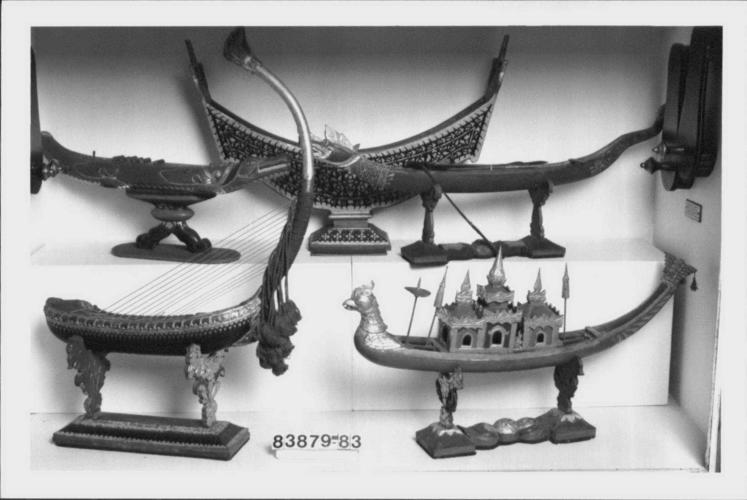Crocodile zither (mi-gyuang) c.1885
Wood, metal, glass, gold leaf | 21.0 x 52.0 x 10.0 cm (including base/stand) | RCIN 83880
-
A wooden zither in the shape of a crocodile (known as a kyam or mi-gyuang) on a stand; with strings (now missing) stretching from head to tail and passing over six small rectangular frets. Three tuning pegs protrude either side of the tail and there are seven sound holes in the top central section of the resonator. Stand and zither are painted red, green and gold, the crocodile with a stylised face baring teeth and on four lightly-carved feet.
Traditionally played in musical ensembles by the Mon people of Burma (now Myanmar), who referred to it as a kyam. Instruments of this form were made across what is now Myanmar, Thailand and Cambodia. The most realistic, with teeth and other facial features, were made in lower Burma.Provenance
Presented to Queen Victoria as part of a group of 'six musical instruments and stands in the form of boats &c.' by the residents of 'Margai' (probably Mergui, now Myeik), Burma, on her Golden Jubilee, 1887 (RCINs 83879-83883). Displayed at the Exhibition of Jubilee Presents at Bethnal Green in 1888 (no.718).
-
Creator(s)
(nationality)Acquirer(s)









